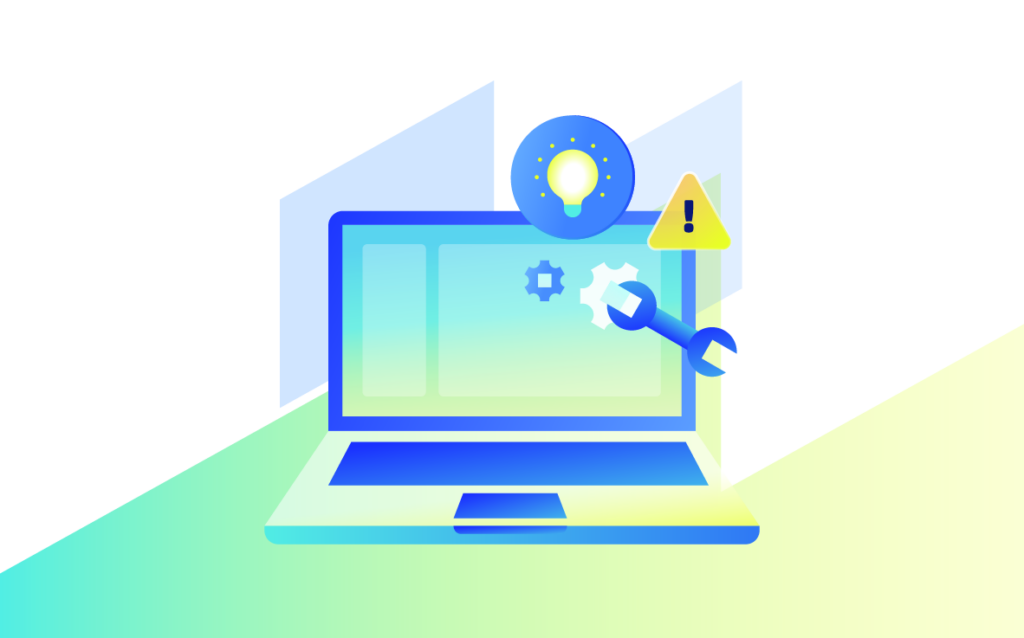Employee morale can make the difference between a struggling company and one that’s thriving and growing. High levels of engagement and enthusiasm amongst the workforce happen at organizations run like a well-oiled machine. Each department works hand in hand with the other, with everyone working toward the same goal.
Even though all parts of a company are responsible for a strong company spirit, IT issues have a powerful impact. While the role of ITOps in overall employee morale may not be readily apparent, a recent study revealed that IT problems are draining the workforce. As the number of tech issues goes up, employee morale and productivity go down.
Morale and productivity are tied together…
A handful of workplace factors have been traditionally linked to low employee morale. This includes ineffective leadership, poor internal communication, workers feeling unappreciated, and the lack of a career path, among other circumstances. However, a more straightforward formula often gets overlooked: productive employees = happy employees.
That’s not to say that companies shouldn’t have strong leadership that shows tangible employee appreciation. But it can be safely assumed that highly productive companies are already doing well in those areas. At a company where everyone can do their individual job, contributing to overall organizational goals, you’re going to find high levels of employee morale.
…and IT is at the center of productivity
In today’s enterprises, IT is linked to employee productivity more than ever. You can trace the origins of this back to the late 1990s as the internet revolutionized how business is done. That was the era when terms like ”enterprise apps” and “business intelligence” made their way into everyday conversation.
Since then, cloud computing, smartphones, and other portable devices have made it possible to get more done anywhere, anytime. By the time millennials entered the workforce, it was understood that critical business functions revolved around IT systems. Then in 2020, productivity and IT became inextricably linked.
The Covid-19 pandemic forced ITOps professionals and teams to put the promise of their infrastructure and support systems to the test. While there’s no doubt that Covid brought fundamental changes to the way we work, it also highlighted some real issues that negatively affect productivity and morale.
There’s immense pressure on HR and hiring managers to make remote and hybrid work function as it should. Central to that is an IT infrastructure that’s up and running 24/7, providing a digital experience similar to being in the office.
Infrastructure reliability hurts hybrid work
Working from home invited more employees to get to know their network admins. It’s one of those jobs that gets little attention when everything is working as it should. No one notices if VPN connections are fast and stable and corporate resource access is unimpeded. It’s a different story when things slow to a crawl or the network is unavailable.
As so much work today requires reliable access to CRM and ERP systems, among other enterprise apps, network problems equal downtime. That’s the ultimate productivity killer, with an unexpected relationship to employee morale.
The move to working from home places additional focus on work-life integration. Slow and unreliable connections hinder remote and hybrid workers who have to wait for service to be restored. That could mean reshuffling a carefully planned-out schedule of work and personal obligations. It’s easy to see morale taking a dip when work starts to invade personal time.
A network outage, even in the office, is no better for morale. The sight of dozens of employees effectively hobbled by the lack of access to critical systems can make a work day feel especially pointless. On the other hand, a slow and aging IT infrastructure tends to validate the executive complaints that remote workers are less productive. In those cases, ITOps has to make do with what they have, which can be a lot of legacy systems.
Old tech and legacy systems sink productivity
Legacy systems represent one of the biggest challenges for any IT department. Outdated systems tend to stick around because significant change at the enterprise level is complicated. The old software that accounting uses may not have had any updates in years. You may even have to keep an older model PC around to run it. But since it still “works,” and implementing new software requires a substantial investment of time and money, replacing the old fixed asset system gets knocked down on the list of priorities.
In many ways, any money saved by not replacing legacy systems is negated by the cost of keeping them running. You may spend countless hours making the data from old software interoperable with current systems. Repairing outdated hardware gets more expensive year after year. The lack of patches creates potential cybersecurity threats that information security analysts need to work around.
All of this adds up to a drain on productivity. And it certainly doesn’t encourage positive morale when an employee has to ask colleagues or customers to bear with them because they’re working with antiquated technology.
Slow project rollouts drain morale
Another reason legacy systems linger is that new IT implementations can take a long time to complete. A project team may spend an inordinate amount of time working with an older system while trying to get its replacement up and running.
In the worst-case scenario, upper management will decide that the implementation is using too many resources and cancel the project. But even when that doesn’t happen, a project that’s dragging along takes workers away from their regular jobs, making a dent in productivity and morale.
However, it’s important to have functional users on the project team. After all, they are the ones who will be using the new systems. Their input on the essential features of the legacy app and what they need from the new system is invaluable.
Lack of proper training is a weakness
New systems will only help if employees know how to use them.
CIOs and their colleagues in the C-suite are in nearly unanimous agreement that they’re picking the right systems and properly training workers. Only half of the general employee population agrees. IT project managers and program managers may need to catch up on the disconnect that’s happening here. Project timelines often focus on milestones, ensuring implementation dates are met but without adequate time devoted to training.
When the workforce feels equipped to use the tools they’ve been given, it’s only natural that engagement levels will stay the same. Frustration will grow around the untapped potential held within the company’s IT systems, delivering another blow to employee morale.
What IT can do to reverse the course
Despite these challenges, IT has opportunities to reverse the course and become the foundation for employee morale and productivity. Of course, everything on an IT wishlist—new network infrastructure, migrating all legacy systems to SaaS apps—won’t happen overnight. But changing up IT practices can get you there without unlimited resources.
No matter how the revamp is done, a modern ITOps overhaul is needed. Never before has the enterprise been more dependent on resilient technology with high levels of uptime. If those expectations aren’t met, employee productivity sharply declines, with morale right behind.
Enterprises will first need to take a hard look at their support models. The help desk alone isn’t going to cut it anymore. The complexities of hybrid and remote infrastructures mean that Level 1 IT support specialists aren’t equipped to provide meaningful help when employees report problems.
The traditional escalation of issues takes too long, leading to frustrated, unproductive employees. Instead, network engineers, data analysts, and other technical leads need to contribute to Level 1 support so that issues are resolved faster.With this foundation in place, a more agile project methodology needs to be adopted. That could mean Scrum masters taking over implementations or adopting a DevOps approach, better suited to the demands of the modern enterprise than traditional ITOps practices.
Subscribe to our blog
Get articles like this delivered straight to your inbox








